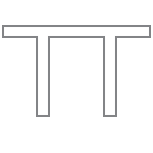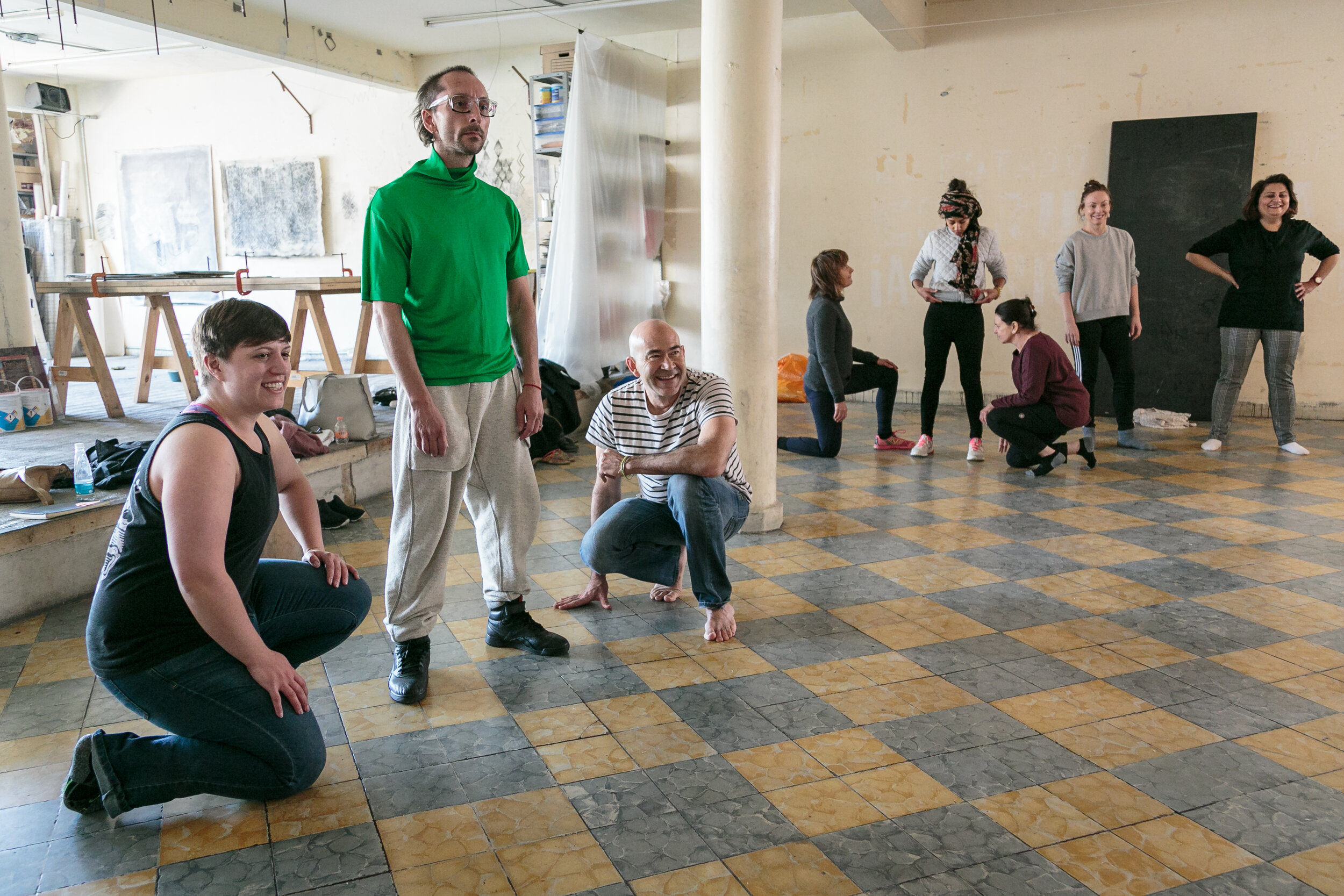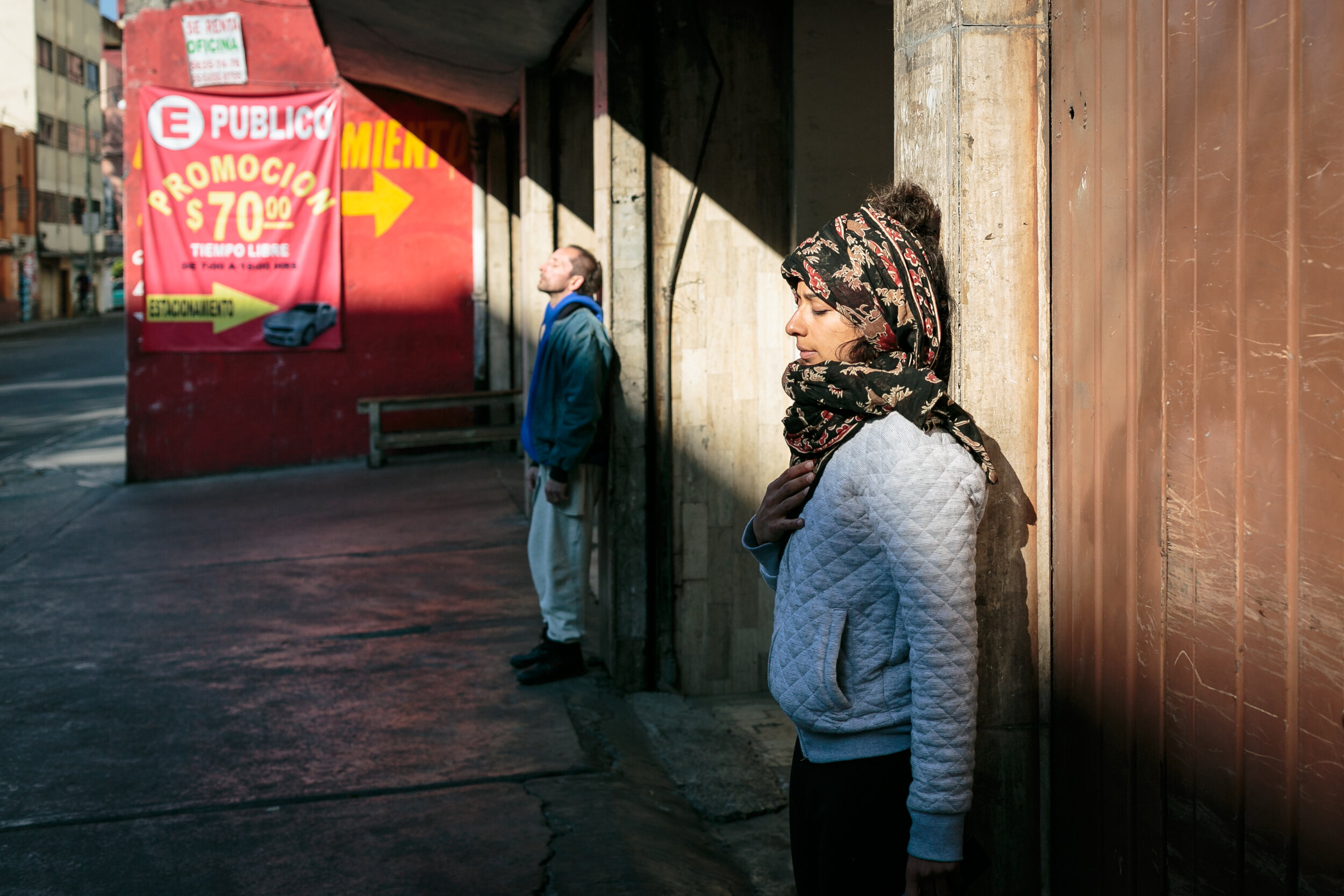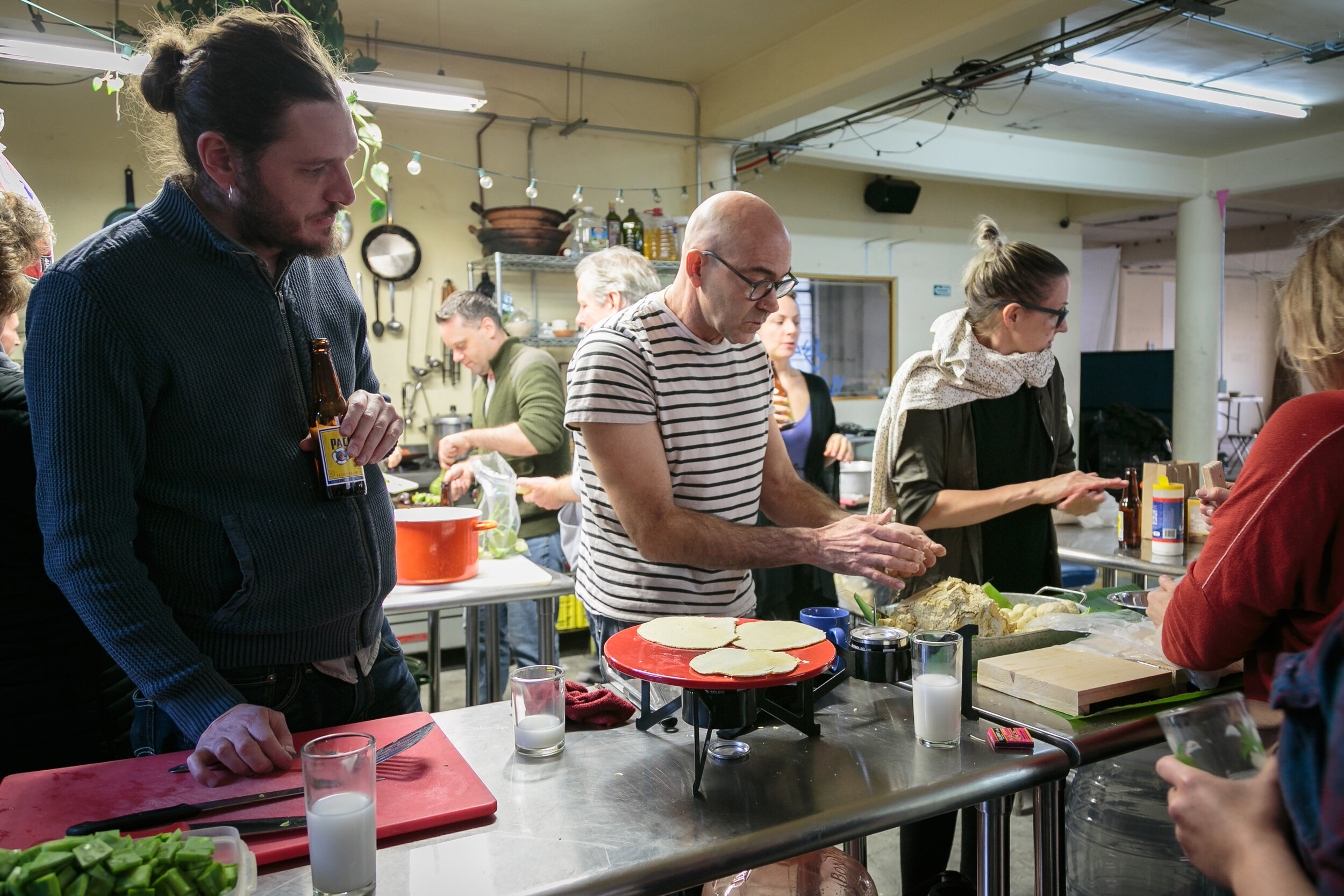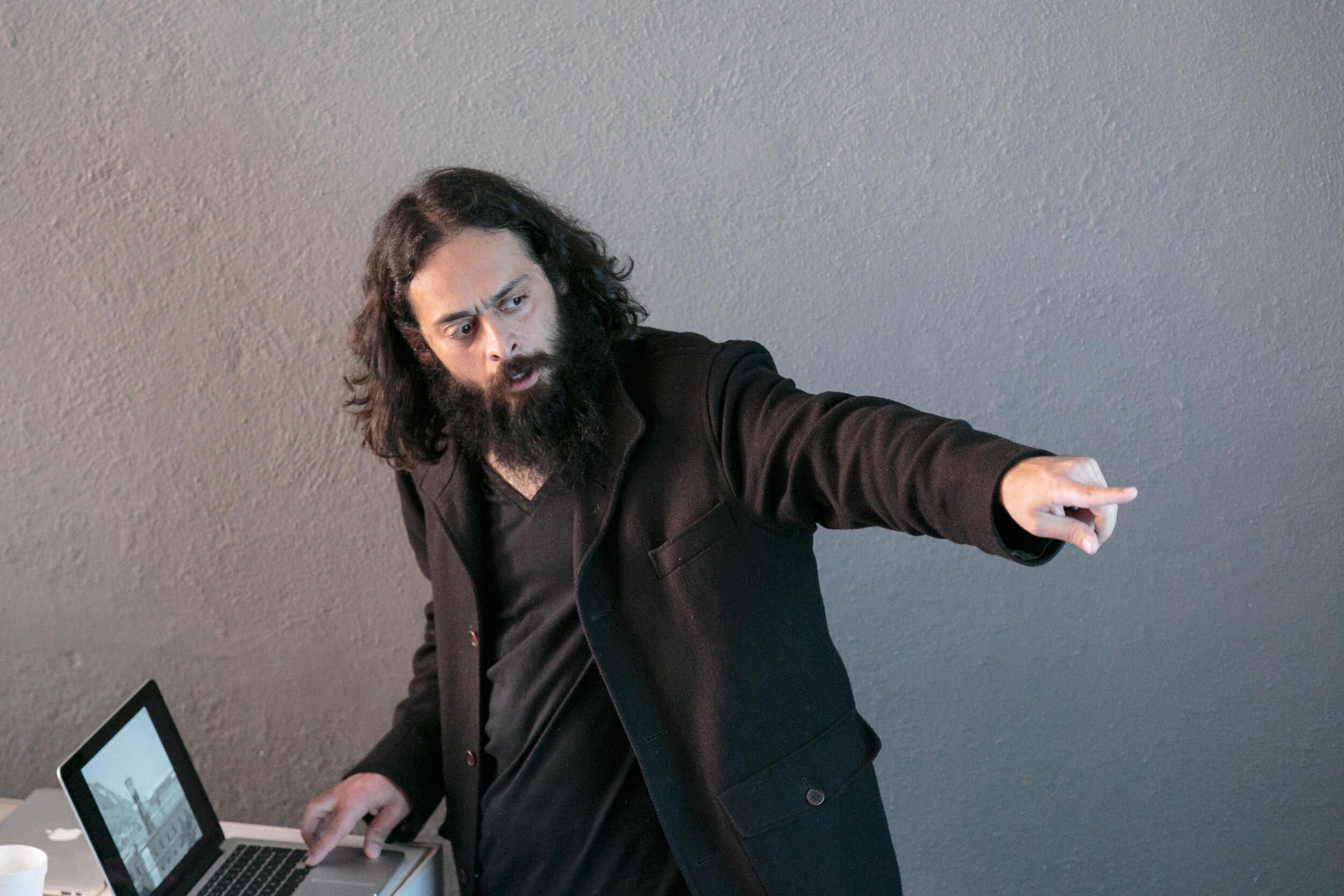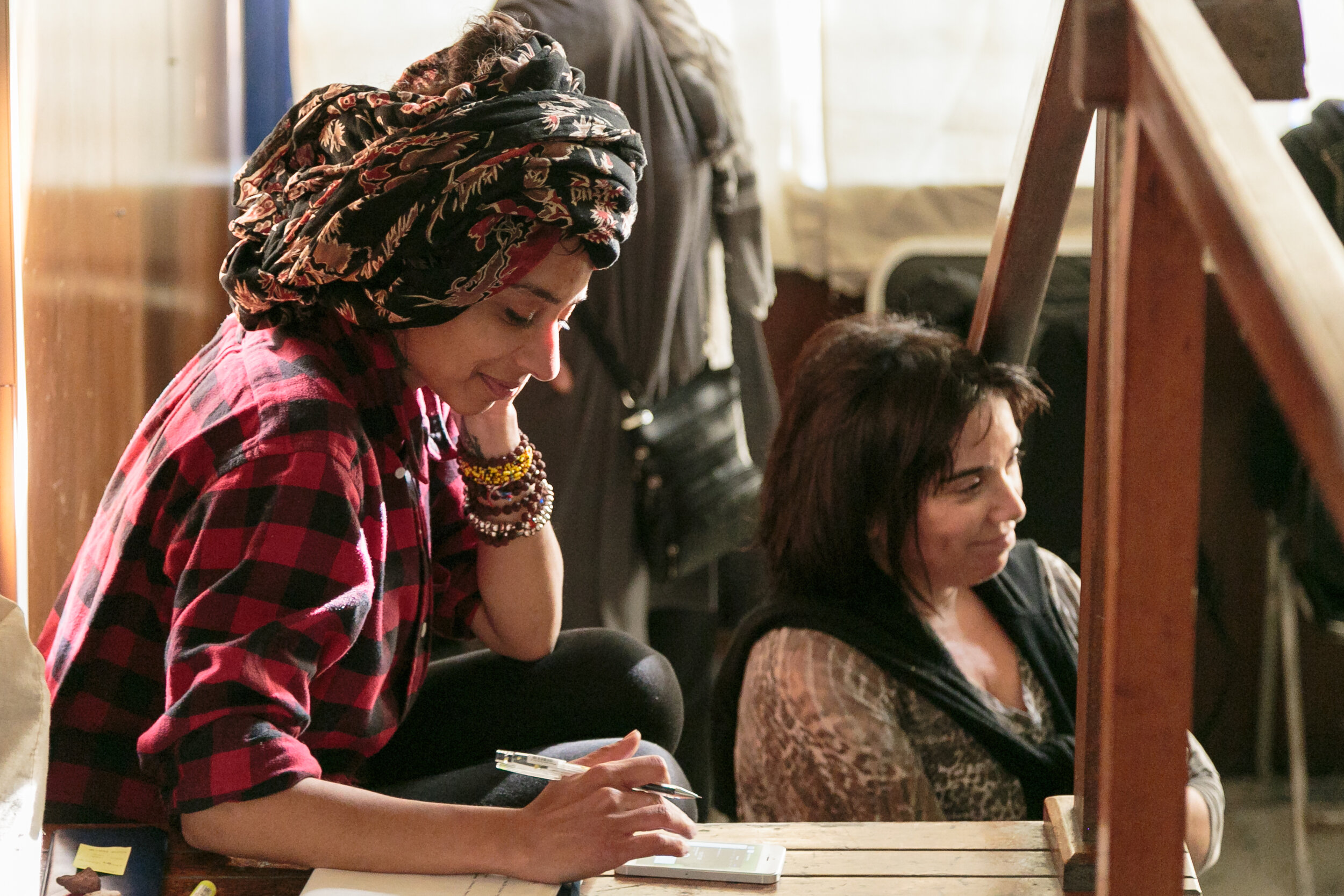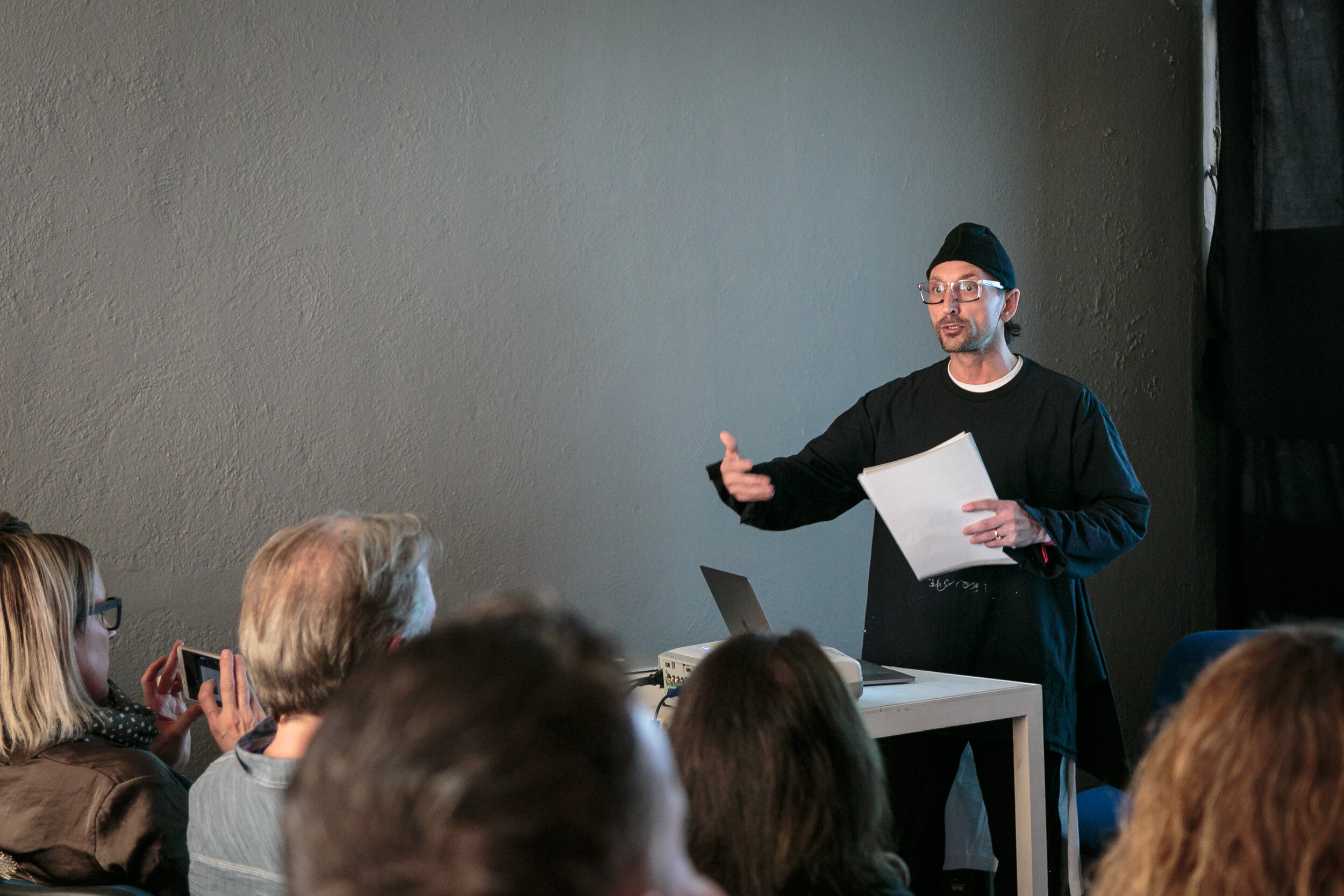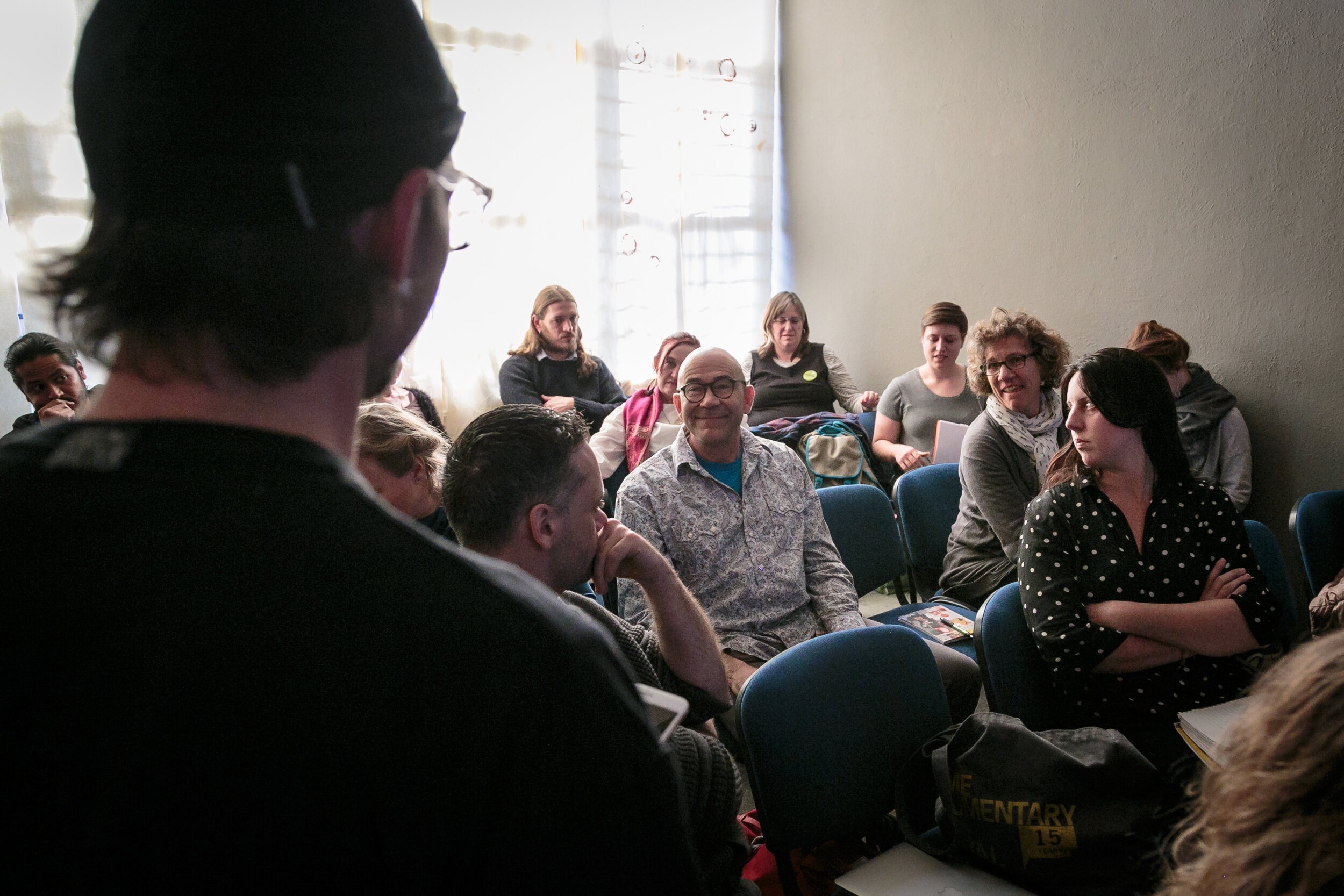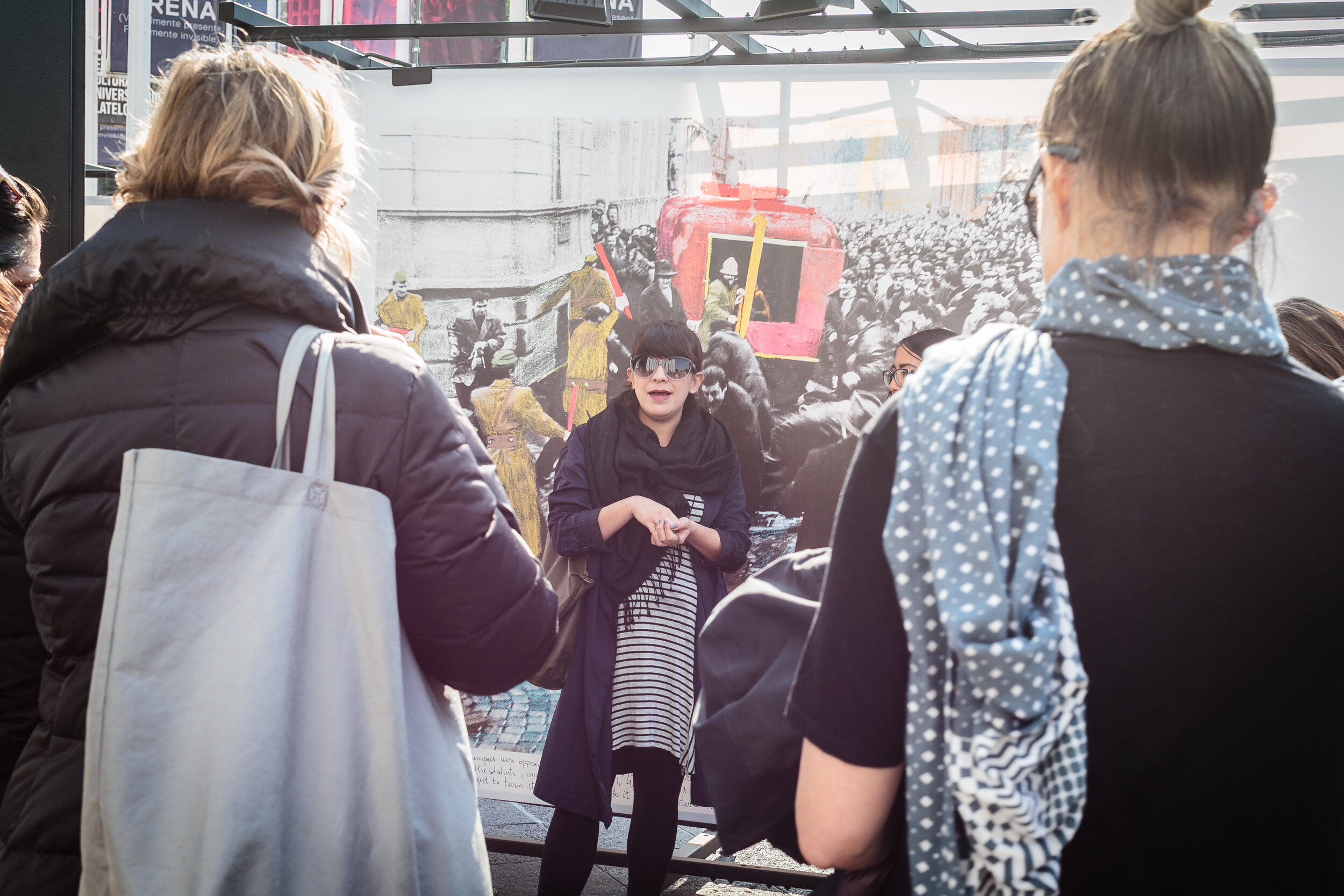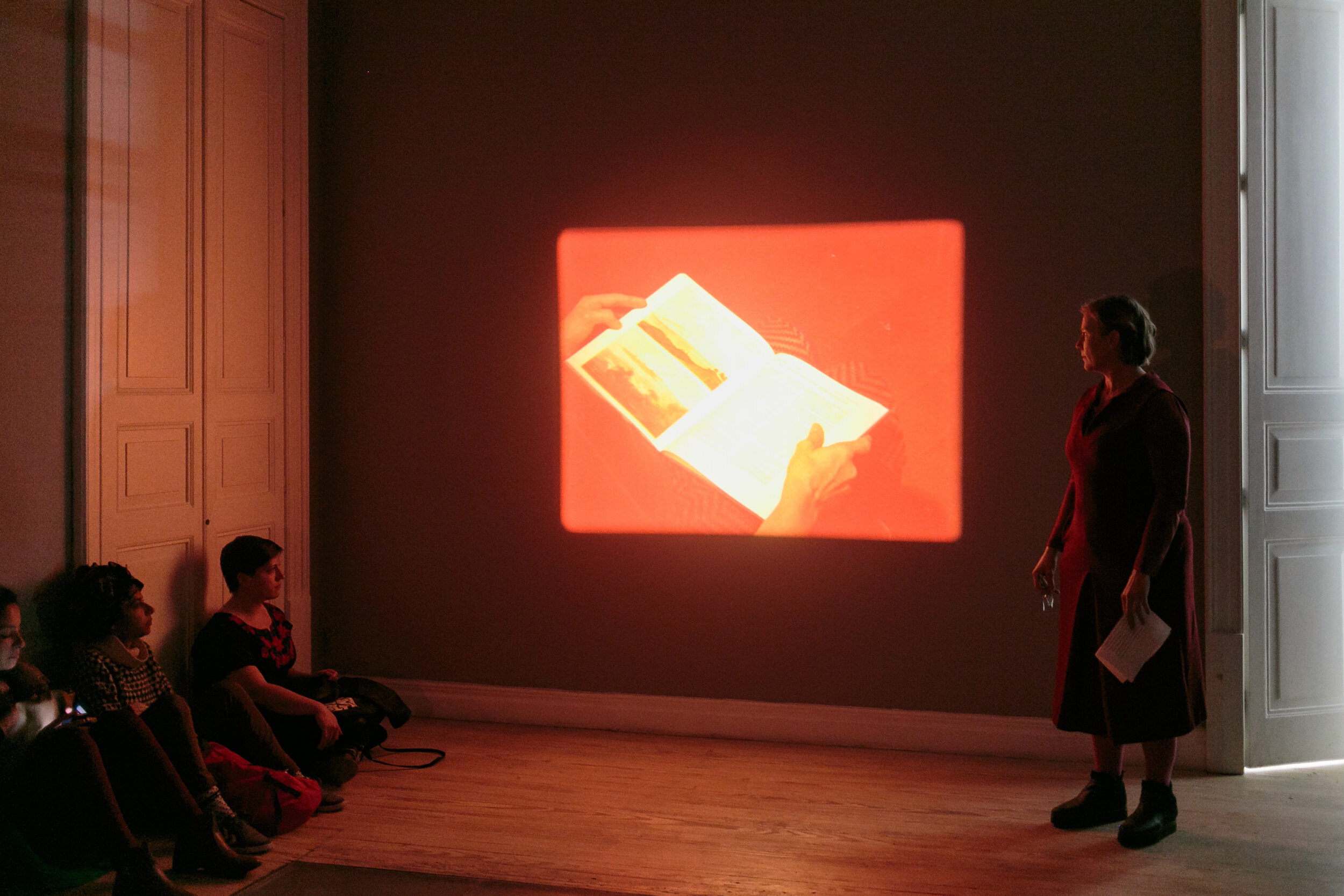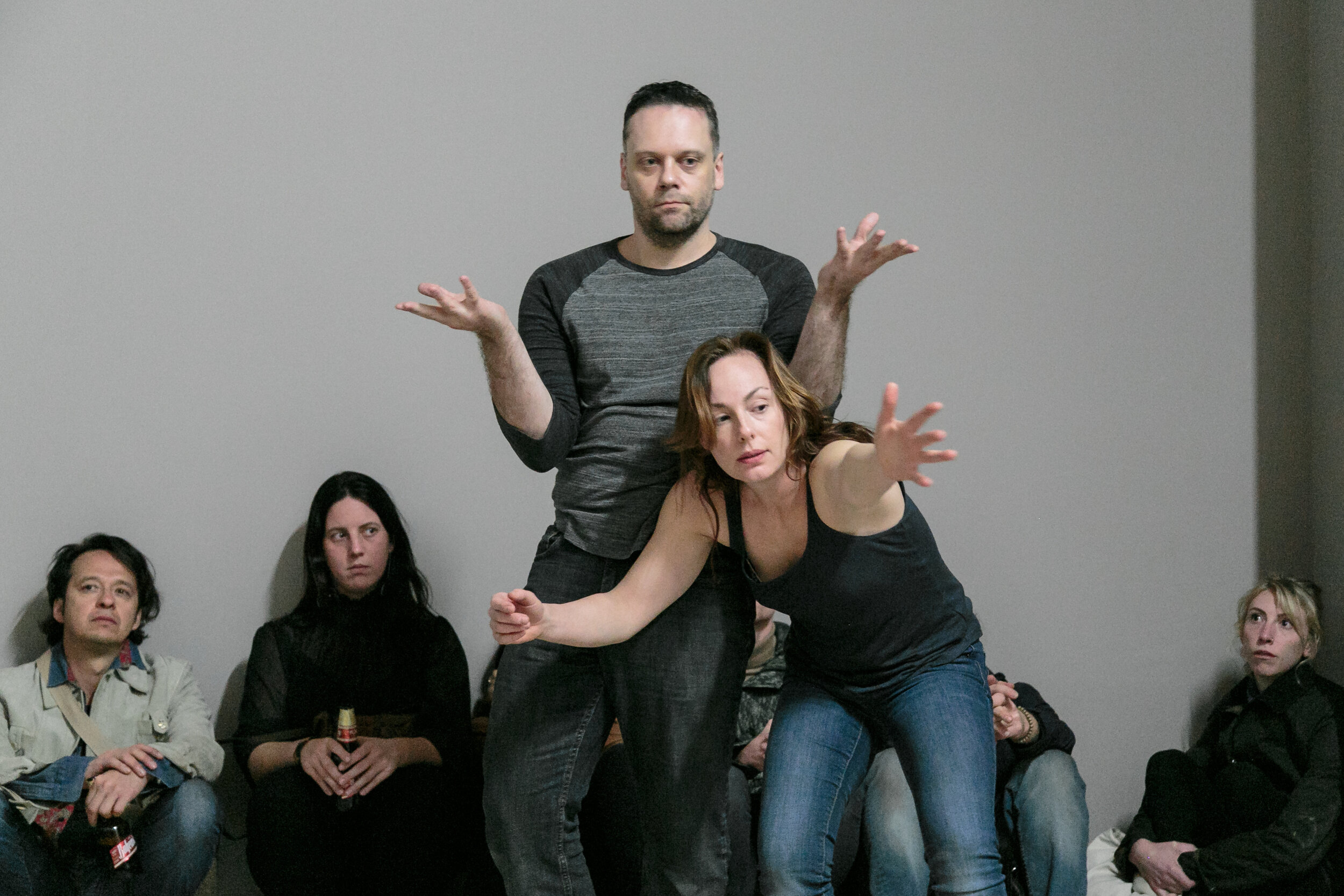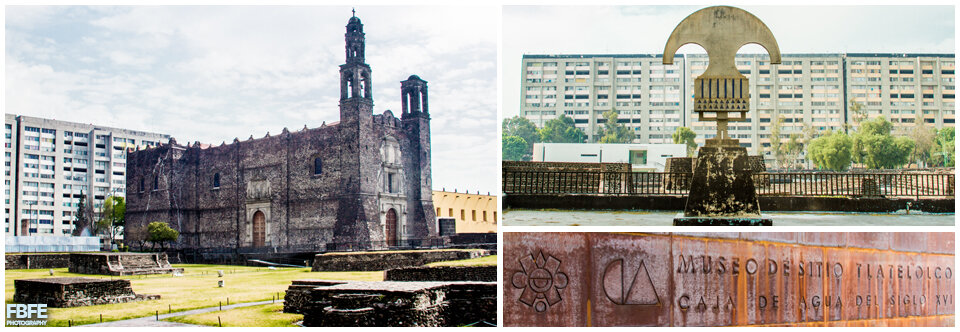WINTER RESIDENCY JANUARY 2018
MEXICO CITY
IN COLLABORATION WITH EMILIO CHAPELA AND IN PARTNERSHIP WITH:
SOMA
Calle 13 #25, Col. San Pedro de los Pinos, 03800 Ciudad de México
http://somamexico.org/
Casa Maauad
Altamirano 20, Colonia San Rafael, Mexico D.F. 06470
https://www.casamaauad.com/exhibitions
Seminario 12
Seminario 12, Centro. Mexico City
http://www.seminario12.com/
Obrera Centro
Calle Isabel la Catolica 144, Centro, 06000 Ejido del Centro, CDMX, Mexiko
http://www.obreracentro.mx/
Torschlusspanik
Av. 1, 37, San Pedro de los Pinos, 03800. Ciudad de México
www.panik.mx
RESIDENCY PROGRAM
FRIDAY, JANUARY 5:
RIVIERA DEL SUR
CHIAPAS 174, ROMA NORTE
OPTIONAL GATHERING
8PM
SATURDAY, JANUARY 6:
STUDIO VISITS AND ARTIST PRESENTATIONS
10AM - 6PM
MEET AT SEMINARIO12 AT 10AM (CENTRO, RIGHT HAND OF THE CATHEDRAL)
OR AT TORSCHLUSSPANIK (EMILIO'S STUDIO) AT 4PM
IF YOU CAN'T MAKE THE 10:00 MEETING TIME.
10:00AM
SEMINARIO12
FOLLOWED BY
LORENZO ALVAREZ ARQUITECTOS
LABORATORIO ARTE ALAMEDA
TORSCHLUSSPANIK
SUNDAY, JANUARY 7: OBRERA CENTRO
10-8: 120 MIN. WORKSHOP EXCHANGE TRANSART + OBRERA
10AM - 11AM
TALK WITH MARCOS CASTRO
11AM - 1PM
WORKSHOP 1: THE POROUS BODY WITH LOUIS LABERGE-COTE
2:00PM - 4:00PM
WORKSHOP 2: THE OTHER SIDE OF THE MIRROR: WORKING WITH THE DEAD
4:00 - 6:00 PM COOKING WORKSHOP
(TORTILLAS, COCHINITA AND NOPALES)
WITH MARIA ALVAREZ (ART + COOKING PUBLISHER) AND AUTHOR LUISA REYES RETANA
6:00 - 8:00
DINNER AND DRINKS
11-1PM | The Porous Body with Louis Laberge-Cote
This workshop will be a movement-based class during which the participants will play and experiment with several physical ideas, spatial concepts, and guided mental imagery games. No previous dance or movement experience is required, but participants should be comfortable with basic movement ideas (such as walking, running, bouncing, and reaching), as well as breathing exercises and physical contact with classmates. Participants should wear comfortable clothing (no need for sports or dance attire) and bring a yoga mat/towel if they prefer not to lie down directly on the floor. Louis Laberge-Côté is a Canadian dancer, choreographer, teacher, and rehearsal director. An acclaimed performer, he has danced internationally with over twenty companies and has been a full-time member of Toronto Dance Theatre (1999-2007) and the Kevin O’Day Ballett Nationaltheater Mannheim (2009-2011). He has created over 80 choreographic works, which have been presented and commissioned in Canada and abroad. An award-winning performer and choreographer, he has received several creation, research, production and professional development grants. A sought-after pedagogue, he has taught classes and workshops around the globe and is on the part-time faculty at Ryerson University (Toronto, Canada). He currently is the Chair of the Dance Committee at the Toronto Arts Council.
1:30 - 3:30PM | The Other Side of the Mirror: Working with the Dead
This workshop is designed to give you some preliminary tools for accessing ancestral voices, sharpening inner vision, and approaching your work with a sense of humor and mystery. There will be guided meditations, simple ritual exercises, discussion, and time to create something based on what you find when you are not quite yourself. Dress in loose clothing, bring something with which to write or draw, and bring 4 small objects that represent the 4 elements. Christopher Danowski is a media/performance artist based in Phoenix, Arizona. He has written over eighty texts for performance works, and has presented work in living rooms, galleries, and unusual spaces (sometimes in theaters) in Phoenix, Brooklyn, Mérida, Dublin, Berlin and Kraków. He was artistic director of Theater in My Basement from 1999-2013, and now serves as a founding member of Howl Theatre Project. His book of writings, ‘Dog’s Ear’ is forthcoming this spring from Four Chambers Press. He has been teaching performance, theatre, and art in university settings since 2003. In June, 2017, he completed his doctorate from here, linking together Afro-Cuban ritual techniques for spirit possession and method acting as transcultural performance methodology.
EVENT HOSTED BY ARTISTS/CO-FOUNDERS MARCOS CASTRO AND MAURO GIACONI
------
MONDAY - WEDNESDAY, JANUARY 8-10: SOMA
PRESENTATIONS BY STUDENTS AND REVIEWERS (BRING MEMORY STICK)
STUDENTS OPEN FORMAT CRITIQUE SESSIONS OF 50 MINUTES (INCLUDING SET UP TIME.)
UNLESS YOU ARE EXPERIMENTING, ITS STRONGLY RECOMMENDED YOU SPEAK NO MORE THAN 10-15 MINUTES TO ALLOW TIME FOR DISCUSSION. MAKE A MEANINGFUL EDIT OF YOUR WORK AND PRESENTATION OF IT. ONLY SHOW WORK YOU SPECIFICALLY WANT DISCUSSED THIS SESSION AND A BARE MINIMUM OF RELATED WORK FOR CONTEXT, IT'S NOT NECESSARY TO SHOW ALL THE WORK YOU DID THIS YEAR, THIS IS WHAT YOUR PROCESS BLOG IS ABOUT. BEST FOR YOUR SESSION!
PRESENTATION SCHEDULE
REVIEWERS
TUESDAY AM 10-2:15
REVIEWERS:
EDUARDO ABAROA
VIRGINIA COLWELL
JOAQUÍN SEGURA
8PM
“THE GHOST IN THE MIRROR” A META-PERFORMANCE BY DR. CHRIS DANOWSKI
THIS 40-MINUTE PERFORMANCE PRESENTATION IS, ON THE SURFACE, AN INFORMATIVE DISCUSSION OF MY PHD THESIS, “THE MEDIUM AND THE MESSAGE: AFRO-CUBAN SPIRIT POSSESSION IN WESTERN THEATRICAL PERFORMANCE.” AS I WALK THROUGH THE VARIOUS RDC STAGES, IT BECOMES INCREASINGLY A MEDITATION ON THE PROCESS OF DOCUMENTATION FOR AN EPHEMERAL ART-LEAD PRACTICE, AND A NARRATIVE ON THE COMPLEXITY OF NARRATION.
RECEPTION
-------
WEDNESDAY AM 10-2:15
REVIEWERS:
EDUARDO ABAROA
JOAQUÍN SEGURA
RICARDO ALZATI
VIRGINIA COLWELL
8:30PM
MIÉRCOLES DE SOMA LECTURE SERIES:
LESLIE GARCIA
PROJECT: PULSU(M) PLANTAE
WWW.LESSNULLVOID.CC
RECEPTION
-----
THURSDAY, JANUARY 11: TLATELOLCO
CENTRO CULTURAL TLATELOLCO AT 10:00M
RICARDO FLORES MAGÓN 1. COL. NONOALCO-TLATELOLCO C.P. 06995.
HTTP://CCUTLATELOLCO.COM/
10-2: "WALK TALK" WITH CURATOR LESLIE MOODY CASTRO
2PM LUNCH
5PM: OPTIONAL SUMMER RESIDENCY PLANNING MEETING (EMILIO'S STUDIO)
6:00: CLOSING MEETING (EMILIO'S STUDIO)
7PM: ARTIST TALK BY PLINIO AVILA (EMILIO'S STUDIO)
TORSCHLUSSPANIK
AV. 1, 37, SAN PEDRO DE LOS PINOS, 03800. CIUDAD DE MÉXICO
WWW.PANIK.MX
TLATELOLCO AND PLAZA DE TRES CULTURAS
The megalopolis of Mexico City is ripe with layers of history and cultural expression which has shaped the formation of the city itself. The foundation of the city lies in its complicated pre-Columbian past that occupies the same space as its post-conquest colonial history with roots so deeply embedded we still see the effects of the past even into the present day. We will walk with independent curator, Leslie Moody Castro and invited expert, George Flaherty through one of the most emblematic spaces in the City. In his book, Hotel Mexico, Flaherty
“...explores how urban spaces—material but also literary, photographic, and cinematic—became an archive of 1968, providing a framework for de facto modes of justice for years to come in his book.
In 1968, Mexico prepared to host the Olympic games amid growing civil unrest. The spectacular sports facilities and urban redevelopment projects built by the government in Mexico City mirrored the country’s rapid but uneven modernization. In the same year, a street-savvy democratization movement led by students emerged in the city. Throughout the summer, the ‘68 Movement staged protests underscoring a widespread sense of political disenfranchisement. Just ten days before the Olympics began, nearly three hundred student protesters were massacred by the military in a plaza at the core of a new public housing complex.
In spite of institutional denial and censorship, the 1968 massacre remains a touchstone in contemporary Mexican culture thanks to the public memory work of survivors and Mexico’s leftist intelligentsia.”
Moody Castro and Flaherty walk and talk with us as we visit this impactful space that represents both a distant and recent past to understand its impact on today's generation of contemporary artists. We will visit with the archeological site with ancient ruins of the Mexica civilization, the colonial church representing the Spanish conquest and the plaza site of the ‘68 massacre, all surrounded by the modern and affected buildings of the 1985 earthquake. We next visit the Memorial 68 Museum at the Centro Cultural de Tlatelolco a symbolic space for reflection, designed to build the country’s collective memory around a recent history that was previously denied.
Suggested Readings:
SYMPOSIUM
ELSE FOUNDATION PRESENTS:
ON LIMITS, BORDERS, EDGES, AND BOUNDARIES
PROGRAM
FRIDAY, JAN 12: CASA MAAUAD
7-10PM OPENING REMARKS, PERFORMANCES, SCREENINGS, VERNISSAGE
SATURDAY, JAN 13: SEMINARIO 12
12-5 PRESENTATIONS (20 MIN.)
5.30-6.30 PANEL DISCUSSION
6.30-8 FINISSAGE
-----
FORUM
TBC SEMINARIO 12
EF CONSORTIUM
NEST + GEOCENTRO
WWW.ELSEFOUNDATION.ORG/FORUM-NEST-CENTROGEO
photo credit: Emilio Chapela Pérez: Es una catástrofe no encontrar terreno en común.
SUNDAY, JANUARY 14: 10-11
OPTIONAL MEETING SPO
CAFE TOSCANO
ORIZABA 145, ROMA NTE., 14260 CIUDAD DE MÉXICO, CDMX
01 55 6731 5131
REVIEWERS
Eduardo Abaroa
In his work, Eduardo Abaroa examines aspects of impermanence, history, and the socio-political fabric of North American society. Frequently he reimagines iconic works and powerful cultural symbols, through which he seeks to dismantle the notions of monumentality and modernity. Found in the intersection of sculpture, installation, and performance, his practice has an immediacy that playfully evades the preciousness often associated with art objects. Even in his more monumental sculptural works, he avoids traditional “fine art” connotations, creating pieces using port-a-potties, tarps, and the rubble of demolished buildings. Inexpensive everyday materials such as cotton swabs, straws and plastic bottles, are frequently found in his pieces. Abaroa’s site-specific projects seek to undermine the authority of cultural institutions, such as the National Anthropology Museum in Mexico City, along with its impulse to install an official narrative and its ultra-nationalistic ideology. By juxtaposing various ideological, aesthetic, and cultural traditions, the artist offers an incisive point of view, deeply critical of the economic and social structures that govern our society.
Abaroa earned his Bachelor of Fine Art from the Escuela Nacional de Artes Plásticas (UNAM) in 1992 and his Masters of Fine Art from The California Institute of the Arts in 2001. He has participated in residencies at La Flora in Bogota (2014), and the Corcoran Gallery in Washington D.C. (2012). In 2011 he directed the IX International Symposium on Contemporary Art Theory, held in Mexico City (SITAC). He has contributed texts for catalogs for many artists vital to the Mexican context, as well as columns and reviews for several journals and publications. He has been the recipient of many grants and awards, including: the Sculpture prize, Sociedad de Valores de Arte Mexicano (SIVAM) in 2006 and 2005, the National Fund for Culture and Arts (FONCA in Spanish) in 2004, and the Fulbright Scholarship, also in 2004.
His most important solo exhibitions include: Stonhenge Sanitario, Sala de Arte Público Siqueiros, Mexico City, Mexico (2006); Eduardo Abaroa, Engendros del ocio y la hipocresía, Instituto Cultural Cabañas, Guadalajara, Mexico (2003); Eduardo Abaroa, Engendros del ocio y la hipocresía (1991-1999), Museo de Arte Carrillo Gil, Mexico City, Mexico (1999); Bitácora Artística, Curare Espacio Crítico para las Artes, Mexico City, Mexico (1997).
He has participated in group exhibitions at many institutions, including: Museo de Arte Zapopan, Zapopan, Mexico (2014); Museo Tamayo, Mexico City, Mexico (2013); The Modern Art Museum of Fort Worth, Fort Worth, United States (2013); Museo Universitario de Arte Contempoáneo MUAC, Mexico City, Mexico (2011); Museum of Latin American Art and the Museum of Contemporary Art, San Diego, United States (2011); Museum of Contemporary Art MOCA, Los Angeles, United States (2007); Museo Nacional Reina Sofía, Madrid, Spain (2005), The Institute of Contemporary Art, Boston, United States (2004). He has also participated in the 6th Bussan Biennial, Korea (2008) and the 25th Biennial de Sao Paulo, Brazil (2002).
http://www.kurimanzutto.com/artists/eduardo-abaroa
Sofía Táboas
Sofía Táboas investigates both natural and man-made space; how it is built and transformed, thought about and perceived. This interest is evident in the materials she uses in her sculptures and installations: artificial and live plants, mosaics, pool equipment, construction materials, plastic, light bulbs, and fire, among others. Her work creates a threshold, a boundary between elements that may be incongruent or seemingly irreconcilable, that serves to reinvent the borders of the public and the private, the inside and the outside. Táboas deftly manipulates space to create interactive structures and contexts where materials can be interpreted on new terms. Despite its seeming formal sobriety, her work is capable of creating habitats, such as floating gardens or underwater scenes, exploring new protozoan life, and give rise to new movement and perception exercises. Influenced by the Arte Povera and Neo-concrete movements, Táboas’ practice can be thought of as an archeology of the future, in which the use of common materials serves to breach the gap separating us from what is outside, of a distant tomorrow, surrounding the spectator with the familiar, in the here and now.
Sofía Táboas received her Bachelor of Fine Arts from UNAM, Mexico City (1986-1990). During the 90s, she was a founding member of the alternative space Temístocles 44in Mexico City.
Her most important exhibitions include: Piedra principio, Fundación RAC, Pontevedra, Spain (2014); Revisiones Superficies Límites, Museo de Arte Carrillo Gil, Mexico City, Mexico (2011); Cinco jardines flotantes para cinco piedras, Casa de Lago Juan José Arreola, Mexico City, Mexico (2009); Azul Pacífico, Casa Barragán, Mexico City, Mexico (2008); Silvestre, Sala de Arte Público Siqueiros, Mexico City, Mexico (2002). Additionally, she has participated in group exhibitions at the following institutions: FRAC Bourgogne in Dijon, France (2014); Palacio de Bellas Artes, Mexico City (2013); Museum of Latin American Art (MOLAA) Long Beach, California, United States (2012); MUCA-UNAM (Museo Universitario de Ciencias y Arte), Mexico City, (2008); The Moore Building, Miami, United States (2002).
http://www.kurimanzutto.com/en/artists/sofia-taboas
Joaquín Segura
Joaquin Segura’s highly diverse oeuvre meditates on violence, political change and the role of ideologies in our current sociopolitical climate. His recent production is visibly concerned about the nature of power and political apparatuses, constructing a practice deeply fascinated by the fissures and contradictions in social superstructures and the crucial role these have played in the globalization of political crisis, mainly explored through constant references to specific historical events. Through his unpredictable works, Segura aims to reach an art of destabilization, elaborating a poetic of sabotage, which relates to impotence, denial & deception.
His action, installation, intervention and photographic work has been extensively shown in solo & group exhibitions in Mexico, USA, Europe & Asia, in venues such as Sala de Arte Público Siqueiros, Museo de Arte Carrillo Gil, La Panaderia and Museo Tamayo Arte Contemporáneo in Mexico City, along with El Museo del Barrio, Anthology Film Archives, White Box and apexart (New York, NY), LAXART, MoLAA (Los Angeles, CA), Museo Nacional Centro de Arte Reina Sofia (Madrid, Spain), National Center for Contemporary Art (Moscow, Russia) and the Modern Art Museum of Fort Worth, TX.
His work has been widely reviewed and featured on major art publications & newspapers such as Flash Art, Adbusters, Art Papers, Codigo, Art Nexus, Artillery, Discipline, Celeste, Reforma & The Washington Post. In 2008/09, Segura was an artist-in-residence at the International Studio & Curatorial Program, New York, NY and at the 18th Street Arts Center, Santa Monica, CA. In 2012/13, he undertook artist residencies and research stays at Hangar - Centre de producció i recerca d'arts visuals (Barcelona, Spain), MeetFactory - International Center of Contemporary Art (Prague, Czech Republic) and Impakt Foundation (Utrecht, The Netherlands).
Segura is also a founding member & board advisor of SOMA, Mexico City.
http://joaquinsegura.net/About
Virginia Colwell
Virginia Colwell’s work examines the space between official and unofficial histories and the poetic ambiguities of truth and fiction in historical narratives. Often she begins her artworks with stories found in her deceased father’s FBI archive, which contains materials that he collected during his career as an agent. Her drawings, sculptures, and videos reinvestigate various cases in the archive through site visits, interviews, archival research, and declassified documents.
Colwell has lived and worked in Mexico City since 2011. Her artistic research focuses on the American South, the Caribbean, and Mexico. She has been an artist in residence with Beta-Local’s La Prática program in Puerto Rico, Untitled art fair’s Fountainhead Residency program in Miami, and the multimedia art center Hangar in Barcelona, Spain. Her works have been exhibited at the Center for Contemporary Art in Lithuania, the Hirschorn Museum in the United States, El Centro de Arte Santa Monica in Barcelona and most recently, at the Centro Cultural Félix Varela during the 12th Havana Biennial. Colwell has received numerous awards including the Virginia Museum of Fine Arts Award, a Pollock Krasner Foundation Fellowship, and a Jumex Foundation Grant. She is currently a faculty member of the SOMA graduate program in Mexico City.
